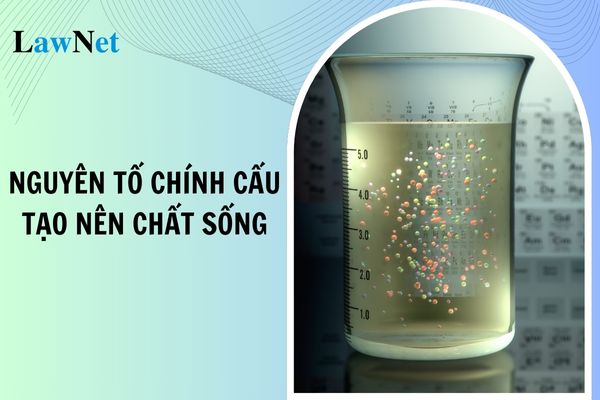What are 4 elements of living organism? What is the stucture of contents of grade 10 Biology in Vietnam?
What are 4 elements of living organism?
Living organism, also known as biological compounds, are organic molecules that construct the structure and function of living organisms. The four primary elements of living organism are Carbon (C), Hydrogen (H), Oxygen (O), and Nitrogen (N). These are the foundation of organic molecules such as proteins, DNA, RNA, and other biological compounds. Specifically:
- Carbon (C): It is the foundation of all organic compounds and the primary element in the structure of biological molecules such as DNA, RNA, proteins, and lipids.
- Hydrogen (H): It is the main component in water and organic compounds, playing an important role in biochemical reactions and maintaining molecular structure.
- Oxygen (O): It is essential for the process of respiration and energy production. Oxygen is also a major component of water and many organic compounds.
- Nitrogen (N): It is a component of amino acids, proteins, and nucleic acids (DNA and RNA), necessary for cell growth and repair.
Note: The above content is for reference only!

What are 4 elements of living organism? What is the stucture of contents of grade 10 Biology in Vietnam? (Image from the Internet)
What is the stucture of contents of grade 10 Biology in Vietnam?
According to the General Education Curriculum for Biology issued alongside Circular 32/2018/TT-BGDDT, the core education content of Biology covers the organizational levels of living organism, including molecule, cell, organism, population, community - ecosystem, and biosphere.
Knowledge of each organizational level of living organism includes structure, function; the relationship between structure, function, and living environment.
From the knowledge about the levels of organization, the subject curriculum generalizes into the common characteristics of the living world such as metabolism and energy conversion, growth and development, reproduction, responsiveness, heredity, variability, and evolution.
Through thematic content, the subject curriculum presents technological achievements in biotechnology for animal husbandry, cultivation, pollution treatment, agriculture and clean food; in medicine and pharmacy.
The content in the Grade 10 Biology curriculum is as follows:
| Content | Grade 10 |
| General Introduction to Biology Curriculum | - Subjects and research fields of biology - Goals and roles of Biology - Future of biology - Professions related to biology |
| Biology and Sustainable Development | - Sustainable development of the natural environment - Social development: bioethics; economy; technology |
| Research and Study Methods in Biology | - Research methods - Materials, equipment - Process skills |
| General Introduction to Organizational Levels of Living World | - Concepts and characteristics of organizational levels of life - Organizational levels of life - Relationship between organizational levels of life |
| Cellular Biology | - Overview of the cell - Chemical components of the cell - Cell structure - Metabolism and energy conversion in the cell - Information in the cell - Cell cycle and cell division - Cell technology and some achievements - Enzyme technology and applications |
| Microbiology and Virology | - Concepts and groups of microorganisms - Microbiological research methods - Synthesis and degradation processes in microorganisms - Growth and reproduction processes in microorganisms - Some applications of microorganisms in practice - Viruses and applications |
What are the requirements to achieve in grade 10 Biology in Vietnam?
Pursuant to the General Education Curriculum for Biology issued alongside Circular 32/2018/TT-BGDDT, upon completing the Grade 10 Biology curriculum, students consolidate and systematize the knowledge and skills acquired in the basic education stage, especially from the subject of Natural Science.
Through modern biology topics such as cellular biology, microbiology and virology, biology and sustainable development, future biology, cell technology, enzyme technology, microorganism technology, etc., students are equipped with an overview of the living world, serving as a foundation for exploring the mechanisms, processes, and laws operating in living objects at cellular and organismal levels and beyond; while gaining a broad understanding of biology, biotechnology, and the role of biology to humans.

